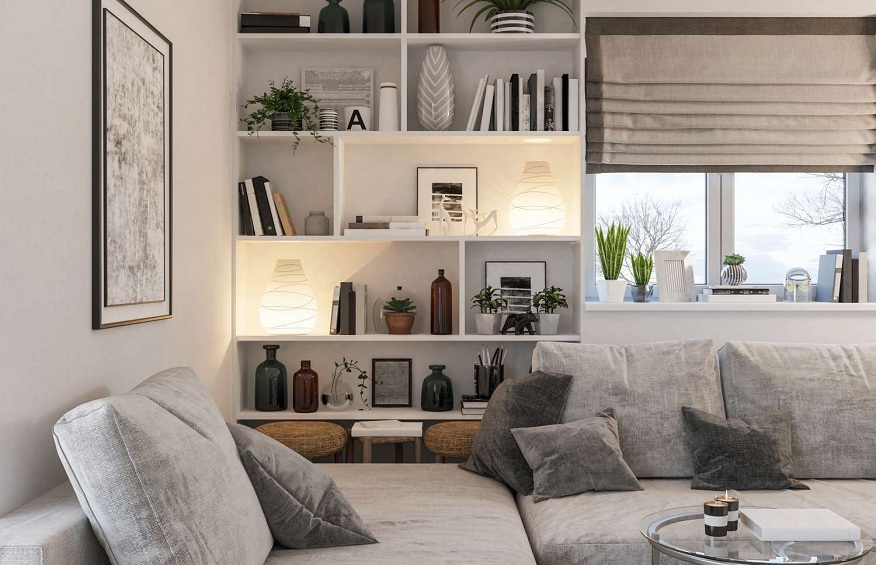People often have unused spaces in their homes that are simply collecting dust. These spaces, whether it’s an empty room, a neglected attic, or a forgotten basement, have the potential to be transformed into functional and valuable rooms. From creating an extra bedroom to a home office or even a cozy entertainment area, turning these unused spaces into functional rooms can provide numerous benefits. In this blog post, we will explore the benefits of repurposing unused spaces, factors to consider before undertaking a room addition project, common challenges that may arise, tips for a successful room addition project, and the mistakes to avoid during this process.
Benefits of Turning Unused Spaces Into Functional Rooms
Optimal Space Utilization
One of the primary benefits of turning unused spaces into functional rooms is the optimal utilization of space. Instead of having empty, wasted areas in your home, repurposing these spaces allows you to make the most out of every square footage available. By transforming a forgotten corner or room into a functional area, you are maximizing your home’s potential and creating additional usable space for your needs.
Increased Property Value
Another major advantage of turning unused spaces into functional rooms is the potential increase in property value. Adding extra rooms or converting existing spaces into functional rooms can significantly improve the market value of your home. When selling your property, potential buyers will be attracted to the added functionality and versatility offered by these transformed spaces, making your home more appealing.
Enhanced Functionality
By repurposing unused spaces, you can enhance the functionality of your home. Whether it’s converting an empty room into a guest bedroom, creating a home office for remote work, or turning a basement into a recreational area, these functional rooms can serve specific purposes that cater to your lifestyle and needs. This added functionality can greatly improve your daily living experience and make your home more enjoyable and practical.
Flexible Living Options
Transforming unused spaces into functional rooms provides you with flexible living options. As your needs change over time, these versatile rooms can be easily adapted to accommodate different purposes. For example, a home office can be transformed into a nursery, or a media room can be converted into a gym. This flexibility allows you to make the most of your home and adapt it to your evolving lifestyle without the need for expensive renovations.
Cost Savings
Repurposing unused spaces into functional rooms can also result in cost savings compared to building additions. By utilizing existing space, you can avoid the need for extensive construction and foundation work that would typically be required in traditional room additions. This can significantly reduce the overall costs of the project while still achieving your desired additional rooms.
Factors to Consider Before Turning Unused Spaces Into Functional Rooms
Permits and Regulations
Before embarking on a room addition project, it is crucial to check local permits and regulations. Depending on the location and scope of your project, you may need to obtain permits and ensure compliance with building codes. It is essential to research and understand the legal requirements to avoid any issues or penalties during the renovation process.
Budget and Financing
Another vital factor to consider is your budget and financing options. Setting a realistic budget and determining how you will fund the project is crucial to ensure a smooth process. It is advisable to get quotes from contractors and factor in any potential additional costs that may arise during the renovation. Exploring financing options, such as a home equity loan or personal loan, can help make your room addition project more achievable.
Structural Considerations
When repurposing unused spaces, it is important to consider the structural aspects of your home. Depending on the nature of the renovation, you may need to assess if the existing foundation and structure can support the new addition. Consulting with a structural engineer or a professional contractor can help determine if any modifications or reinforcements are needed to ensure the safety and stability of the space.
Functionality and Design
Before transforming an unused space, carefully consider the functionality and design of the room. Determine the purpose of the new room and plan its layout accordingly. Consider factors such as lighting, ventilation, storage options, and any specific requirements for the intended use of the space. Taking the time to plan and design the room will ensure that it meets your needs and enhances the overall aesthetics of your home.
Common Challenges in Room Addition Projects
Structural Modifications
One common challenge in room addition projects is making necessary structural modifications. Depending on the condition of the existing space, you may need to make changes to walls, windows, or ceilings to accommodate the new room’s requirements. These modifications can sometimes be complex and require the expertise of qualified contractors or professionals to ensure the integrity of the structure.
Finding Qualified Contractors
Finding reliable and experienced contractors is another challenge that many homeowners face when undertaking room addition projects. It is essential to research and interview potential contractors to ensure they have the necessary skills, certifications, and references. Requesting detailed project proposals and comparing pricing and timelines can help you make an informed decision when selecting a contractor for your project.
Managing Time and Schedules
Room addition projects can be time-consuming, and managing the construction schedule can be a challenge. Coordinating contractors, suppliers, and deliveries requires careful planning and effective project management. It is essential to create a realistic timeline and establish clear communication with all parties involved to ensure the project stays on track and is completed in a timely manner.
Dealing with Unexpected Costs
During room addition projects, unexpected costs can arise. It is crucial to have a contingency budget to account for any unforeseen expenses that may arise during the renovation process. Factors such as structural issues, code compliance requirements, or design changes can result in additional costs. Proper financial planning and regular communication with contractors can help mitigate the impact of unexpected expenses on your project.
Tips for a Successful Room Addition Project
1. Planning and Design Considerations
Before starting your room addition project, spend ample time planning and considering design aspects. Clearly define the purpose of the new room and envision how it will align with your overall home design. Take into account the layout, functionality, and aesthetics, ensuring that it complements the existing structure and enhances your living space.
2. Hiring a Reliable Contractor
Selecting a reliable and experienced contractor is crucial for the success of your room addition project. Take the time to research and interview multiple contractors, checking their credentials, references, and previous work. Request detailed project proposals, including timelines and pricing, to make an informed decision. Communication and trust with your contractor are key to ensure a smooth and successful renovation process.
3. Managing Budget and Financing
Proper budget management is essential to avoid project delays or financial issues. Set a realistic budget, factoring in potential additional costs, and explore different financing options if needed. Regularly communicate with your contractor to track expenses and adjust plans accordingly to ensure the project stays within budget.
Mistakes to Avoid When Turning Unused Spaces Into Functional Rooms
When repurposing unused spaces, it is important to avoid common mistakes that can lead to unsatisfactory results or costly issues. Some key mistakes to avoid include:
- Skipping proper permits and not complying with building codes.
- Underestimating the budget and not accounting for additional costs.
- Ignoring structural considerations and modifications needed for the new room.
- Hiring unqualified or unreliable contractors.
- Not planning for potential challenges and unexpected issues that may arise during the renovation.
- Ignoring functionality and design considerations, resulting in a room that does not meet your needs or aesthetic preferences.
Avoiding these mistakes and taking the time to carefully plan and execute your room addition project can help ensure a successful outcome.
Conclusion
Transforming unused spaces into functional rooms can unlock the hidden potential in your home, providing you with additional living space and numerous benefits. From optimal space utilization and increased property value to enhanced functionality and flexible living options, repurposing unused spaces can truly transform your home. However, it is important to consider factors such as permits, budget, structural considerations, and design before undertaking a room addition project. By planning, hiring reliable contractors, managing your budget, and avoiding common mistakes, you can successfully turn unused spaces into functional rooms that meet your needs and enhance your living experience.
Publisher Details:
MY Home Builders
20720 Ventura Blvd Unit 280, Woodland Hills, CA 91364, United States
(818) 900-7563
myhbinc.com
[email protected]
Unlock your home’s potential by turning unused spaces into functional rooms. Maximize space utilization, increase property value, and enhance functionality. Hire reliable contractors, manage your budget effectively, and avoid common mistakes for a successful room addition project. Call experts at MY Home Builders for professional room additions in Glendale, CA.
Read their new blog on Adding A Second Unit To Your Home.

